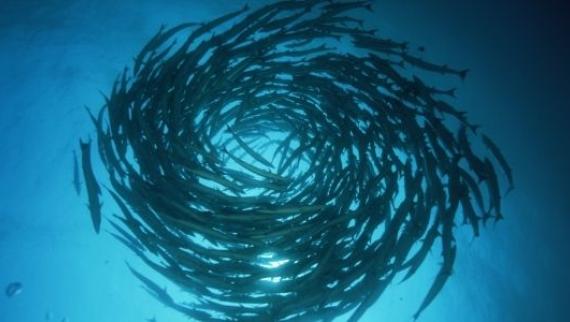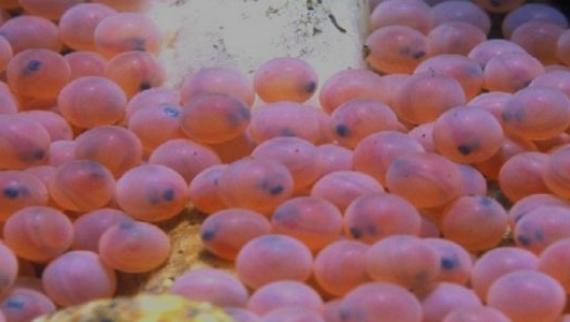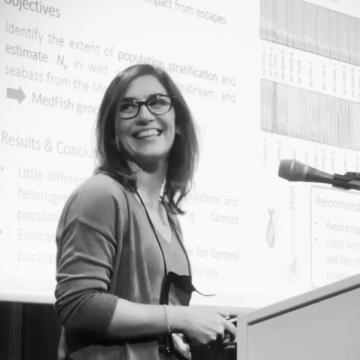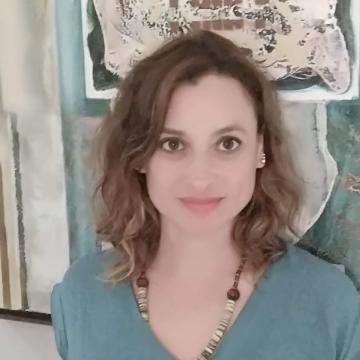Aquatic Biotechnology Lab
Our lab studies the fundamental question of how the development of complex organisms is controlled, using turbot and zebrafish as our models.
The main scientific objective of the Aquatic Biotchenology Lab is to apply molecular and cellular approaches to studies of early development and disease in fish, as well as to apply basic science to improve the yield, performance and sustainability of marine aquaculture at the global level.
Our lab's research generally focuses on understanding how the information encoded in DNA is accurately used by cells to perform the physiological functions required during the different developmental phases.
The disruption or breakdown of these regulatory mechanisms is responsible for many developmental abnormalities, such as morphological deformities. We aim to reveal the way some of these mechanisms work, which, in turn, will help us understand the cause of the associated abnormalities. We use zebrafish (Danio rerio) and turbot (Scophthalmus maximus) as model systems.
- Jesús Marco de Lucas; M. Victoria Moreno-Arribas; Montoliu, Lluís; Rada-Iglesias, Alvaro; Domínguez, María; Huertas Sánchez, Pablo; De Las Rivas, Javier; Rojas, A. M.; Azorín, Ferran; Rotllant, Josep; Gutiérrez Armenta, Crisanto; Hernández-Munaín, Cristina; Barco, Ángel; Gómez, María; Herrero, Antonia; Ramos, Lourdes; Fraga, Mario F.; Ramos, Sonia (2021) White Paper 3: Genome&Epigenetics Consejo Superior de Investigaciones Científicas ISBN:978-84-00-10739-0
- Guerrero-Peña, L.; Suarez-Bregua, P.; Méndez-Martínez, L.; García-Fernández, P.; Tur, R.; Rubiolo, J.A.; Tena, J.J.; Rotllant, J. (2021) Brains in Metamorphosis: Temporal Transcriptome Dynamics in Hatchery-Reared Flatfishes Biology DOI:10.3390/biology10121256
- Azorín F; Rotllant J; Albert Jordán; Ignacio Maeso; Miguel Manzanares; Álvaro Rad; Joaquim Roca; Guillermo Vicent (2021) 3D Genoma Architecture " Genome & epigenetics vol. 3" Consejo Superior de Investigaciones Científicas
- Henriques, D.; Balsa-Canto, E. (2021) The Monod Model Is Insufficient To Explain Biomass Growth in Nitrogen-Limited Yeast Fermentation Applied and Environmental Microbiology DOI:10.1128/AEM.01084-21
- Suarez-Bregua, P.; Pirraco, R.P.; Hernández-Urcera, J.; Reis, R.L.; Rotllant, J. (2021) Impact of dietary phosphorus on turbot bone mineral density and content Aquaculture Nutrition DOI:10.1111/anu.13253
- TFM - Andrielle Larissa Reascos Tatés (26/09/2022) Nuevas herramientas para la monitorización de cetáceos en el norte y noroeste de la Península Ibérica: ADN ambiental y drones UNIVERSIDAD COMPLUTENSE DE MADRID
- TFM - PRIYANKA SONI (15/07/2021) How Fishes Color their Skin: Genetic Analysis of Melanocortin Receptor 2 (MC2R) in Fish Pigmentation UNIVERSIDAD DEL PAIS VASCO (UPV/EHU )
- TFM - Lara Vidal Nogueira (04/09/2020) La arquitectura tridimensional del Genoma. Principios y funciones Univerdidad de Vigo (UVigo)
- TFM - Luis Méndez Martínez (14/07/2020) Caracterización funcional del papel del receptor de melanocortinas Mc2r en la formación del patrón de pigmentación en el pez cebra (Danio rerio) Univerdidad de Vigo (UVigo)
- TFM - Miguel Álvarez González (09/07/2020) Análisis de ADN ambiental (eDNA) y su aplicación para la monitorización de cetáceos en el Atlántico norte Universidade de Vigo (UVIGO)
- Capabilities | Development and application of molecular methodologies for the identification and quantification of marine species in environmental samples
Identification of new molecular markers for species identification through Next-Generation Sequencing in environmental DNA samples, with applications for biodiversity monitoring and fisheries stock assessment.
- Capabilities | Biodiversity AssessmentMarine instruments & sensors Coastal & Environmental Protection Maritime Spatial Planning Ecosystem Services & Governance
Monitoring temporal and spatial distribution of species, abundance and biomass from several taxa using different techniques such as e-DNA, pigment characterization, flow cytometry, acoustic telemetry, images collected from remote observation systems (i.e. drones, etc.) or classic taxonomic identification.
- Capabilities | Development and optimization of aquaculture systems for traditional and new farmed species
Development of integrated culture techniques for new aquaculture species, as well as optimization of traditional ones based on different approaches (i.e. early development, handling, feeding, disease and immune responses, ecophysiological performance, or ecosystem carrying capacity) to improve animal welfare, yield and sustainability in global marine aquaculture.
- Capabilities | Fisheries stock assessment using traditional and molecular ecology approaches
Development of stock assessment models to estimate fish population status and Maximum Sustainable Yields for fisheries, based on fishing pressure data and population dynamics parameters (abundance, distribution, age, fecundity, etc.) obtained using traditional approaches and -omic techniques, which allow for a much higher spatial resolution.
- Capabilities | Development of “in vivo” bioactivity tests for biomolecules using animal models
Use of animal models (zebrafish, turbot, mice, etc.) as model systems to study the bioactivity of different compounds, as well as fish and human diseases (septic shock, inflammatory illnesses, etc.).
















